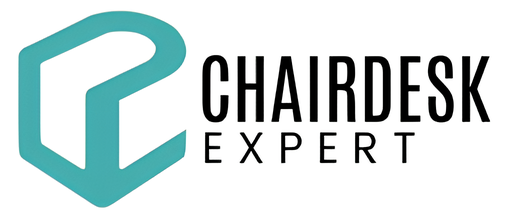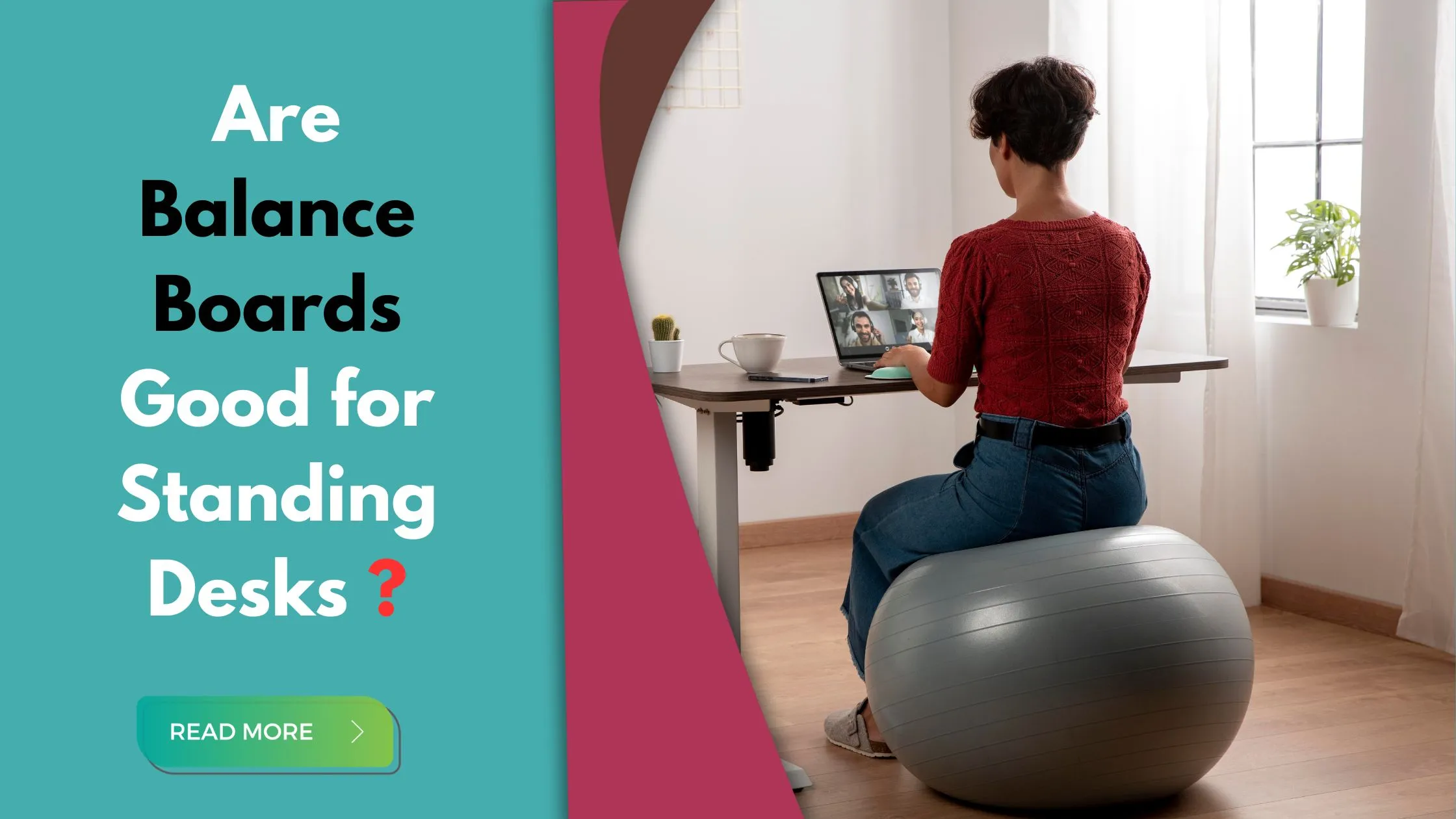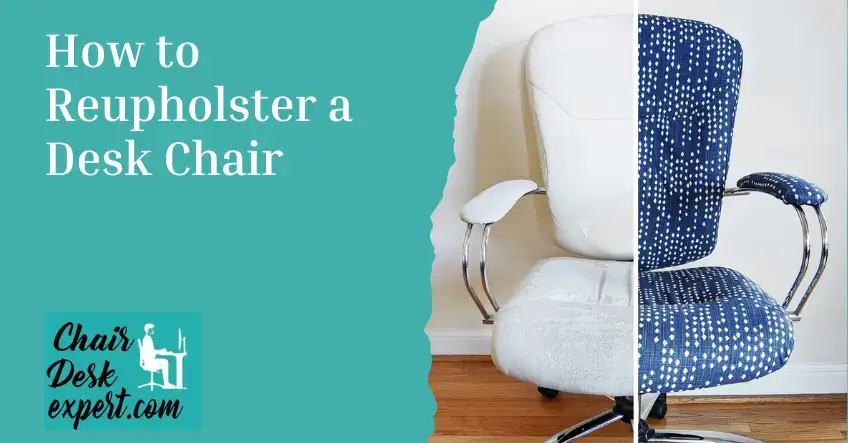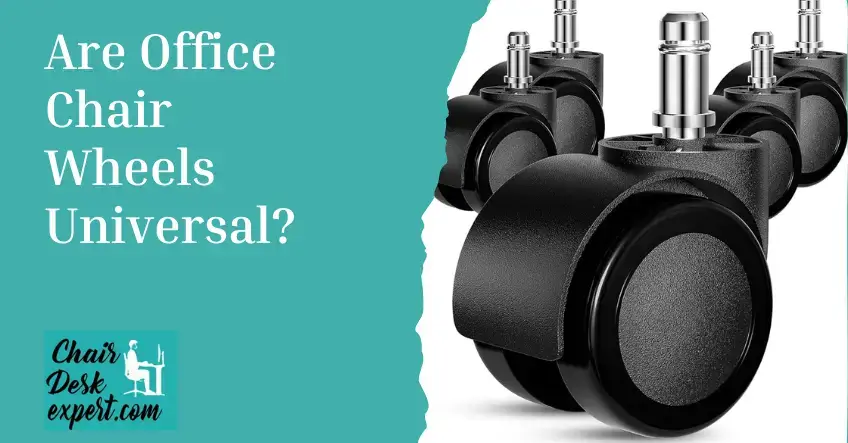Many individuals have turned to standing desks as a solution in the search for a healthier and more dynamic workspace. Nonetheless, standing still for long periods can cause fatigue and discomfort. Meet the balance board – designed to keep you active and focused while working.
Balance boards are growing in popularity as an accompaniment to standing desks, and they promise improved posture, better core strength, and increased work rate. But do balance boards go well with standing desks? In this blog, let us look: Are balance boards good for standing desks?
Benefits of Using Balance Boards | Are balance boards good for standing desk ?

Below we will discuss in detail are balance boards good for standing desks and its benefits.
1: Increased Energy Expenditure (EE)
This means that using a balance board when working increases energy expenditure compared to sitting or even just remaining stationary (at rest). In particular, the study found that using a balance board resulted in higher calorie burn per minute (1.48 kcal/min) compared to sitting (1.27 kcal/min) or standing still (1.42 kcal/min). The more calories one burns, the better one manages weight and improves general health.
2: Higher Oxygen Consumption (V˙O2)
Your oxygen consumption dramatically increases if you work on a balance board. Research showed that V˙O2 values were higher when using a balance board (3.92 mL·kg·min) compared to sitting (3.35 mL·kg·min) or lying down at rest (3.77 mL·kg·min). Over time, increased oxygen consumption indicates improved cardiovascular engagement, resulting in better heart health.
3: Enhanced Muscle Engagement and Stability
For instance, a balance board compels your body to engage various muscles, particularly those of your midsection and lower half, to maintain stability. This continuous tension strengthens these muscles, leading to good posture that decreases the risk of musculoskeletal disorders commonly noted with prolonged seating positions.
4: Improved Heart Rate (HR)
Sitting on a balance board elevates heart rates more than merely being seated does. According to the study results, heart rates were higher during standing (76 bpm) and riding using a balance board (76 bpm) than when individuals were seated (67 bpm). Increased heart rate signifies more physical activity, hence better cardiovascular health.
5: Maintained Productivity
Importantly, there is no reduction in productivity when a balance board is used. The study measured words typed per minute, typing mistakes, and accuracy, finding no significant differences across sitting, standing, and balance board conditions. Therefore, you will be able to enjoy all the positive effects of having a balanced board while at the same time ensuring that your job is still done on time.
6: Reduced Sedentary Fatigue
Alternating between sitting and standing and using a balance board may help minimize the fatigue and discomfort often experienced during prolonged static postures. Although tiredness increases in all cases, the dynamic nature of using a balance board can make standing periods feel more comfortable and less monotonous.
On the other hand, pain levels increased over time in all positions; however, this was faster when they used a balance board than continuously remaining in an upright posture. This means that micro-movements involved in balancing might be one way of managing discomforts rather than being stationary.
In short, using a wobble board at your stand-up desk can elevate your workday by increasing energy expenditure, optimizing muscle involvement, and sustaining productivity while effectively combating fatigue and pain. Therefore, it should be included in all ergonomic workplaces that aim to promote health.
A Balance Board Makes You Use Your Muscles
In order to stay balanced on the board, you need to use your muscles all the time, especially the important core ones as they are weakened by sitting all day long. Consequently, constantly using a balance board will keep his core strong and remain upright.
Small Movements Are Better Than Just Standing Still
Although standing is better than sitting, it can become tedious after a while, making you fidgety. However, with a balance board, standing becomes fun, which involves small movements that are good for exercise. It means you can move without leaving your desk or going to the gym.
Gentle Movements Work Different Muscle
The gentle movements of this kind of exercise activate muscles throughout the body without the danger of injury present in high-impact workouts. This feature makes it suitable for people of all ages and fitness levels.
A Balance Board Keeps You Awake And Alert
You cannot fall asleep on a balance board because its movement keeps you awake and focused throughout the day. Simply standing still can get tiring, but moving about keeps you alert and engaged.
Exploring Different Types of Balance Boards

Balance boards come in several types that offer different ways to keep you active while standing upright or sitting. Let’s look at five basic kinds of balance boards:
Rocker Boards
These are simple.
- They have a plain design with a fulcrum attached below the board.
- You position one foot at either end and rock the board from side to side.
- Great for improving balance and core strength.
Rocker-Roller Boards
These make rocker boards more challenging.
- Instead of a fixed pivot, a cylindrical roller is beneath them.
- As your weight shifts, it becomes more challenging to balance them.
- It provides an enjoyable and dynamic way to work out your muscles.
Wobble Boards
- Wobble boards have semi-sphere fulcra beneath them.
- Allow movement in all directions as they act as full-body trainers.
- They are perfect for rehabilitation, injury prevention, or improved stability training.
Sphere and Ring Boards
- A ring encloses the ball-shaped fulcrum in these boards.
- This enables the board to move sideways, back and forth, and twist around its axis at will!
Thus, it provides greater degrees of freedom than any other form of exercise, even if we never expected this much flexibility before!
Aquatic Balance Boards
These balance boards are designed for the water environment and provide an exciting alternative to conventional balance training methods.
- They give smooth resistance without causing impact injuries.
- It is ideal for physical therapy, rehab or fun at the pool!
With so many available options, there’s bound to be a type that suits each person best among the numerous choices available on market shelves today. Whether you want better equilibrium skills, build up muscle frameworks, or simply make exercises more interesting, there must surely be some kind that would suit you perfectly !
Why not try out one now? You will be amazed by the incredible results you see with your own eyes!
How to Use a Balance Board with a Standing Desk ?
Balance boards provide an inventive way of amplifying the advantages of standing desks by introducing these dynamic devices into your working space; you can incorporate movements, engage muscles and have a better posture while working at height. Here is how it should be done:
Get Acquainted with the Board:
Before starting, spend some time becoming accustomed to the balance board. Try standing on one foot at a time to understand its motion and balance requirements.
Select a Firm Surface:
Put your balance board onto an even surface near your desk where you work while standing. There has to be enough room around the board to move freely without any obstacles.
Commence Gradually:
To begin with, step onto the balance board using one foot while holding it to your table or other nearby object for support. Slowly transfer your body weight and attempt not to lose balance.
Go Ahead & Put On Both Feet:
After gaining more confidence, proceed to standing on both feet on top of the balance board; focus on maintaining equal weight distribution and engaging core muscles to stabilize yourself.
Proceeding To Both Legs:
Once you become more confident in yourself, move from standing on one leg on the balance board’s surface to putting both legs together inside this tool. Take care to distribute body weights evenly and tighten stomach muscles for stability.
Add Some Movement:
Make small moves, such as shifting from side to side or frontwards/backwards while balancing atop the wobble deck or swaying through gentle rocking motions, when trying out different movement concepts that activate various muscle groups, thus enhancing blood flow throughout the body.
Watch Your Posture:
Maintain an upright stance with shoulders pulled back and core engaged so that you don’t slouch or depend too much on this furniture for support.
Break When Necessary:
Listen to your body and take breaks whenever you need to rest and stretch; alternating between standing on the board and standing directly on the floor can be helpful in case you are being taxed by balancing for a long time.
Gradually Increase Intensity:
As you get comfortable with the balance board, find ways to challenge yourself with more intense movements. Deepen squats, lunges, or other balance exercises that stimulate muscles.
Stay True To It:
Consistency is crucial in benefiting from using a balance board at your stand-up desk; it pays off to include short sessions of b-board usage in daily activities geared toward regular movement and active involvement.
Similarly, by following these stages and adding a balance board to their workstations set up for standing desks like this one, they will be able to enjoy working more while staying healthy. Experiment with different techniques and movements to find what works best for you and enjoy the dynamic benefits of a balanced and active workspace.
Secret unfold
Are balance boards good for standing desks? Balance boards can be a great addition to standing desks, offering numerous benefits such as improved posture, increased core strength, and enhanced overall balance. By engaging your muscles and promoting movement, balance boards can help reduce the discomfort and fatigue often associated with prolonged standing.
While they may not be suitable for everyone, especially those with balance issues or certain medical conditions, they can be an excellent tool for those looking to add a dynamic element to their work routine. Incorporating a balance board into your standing desk setup can contribute to a healthier, more active work environment.









